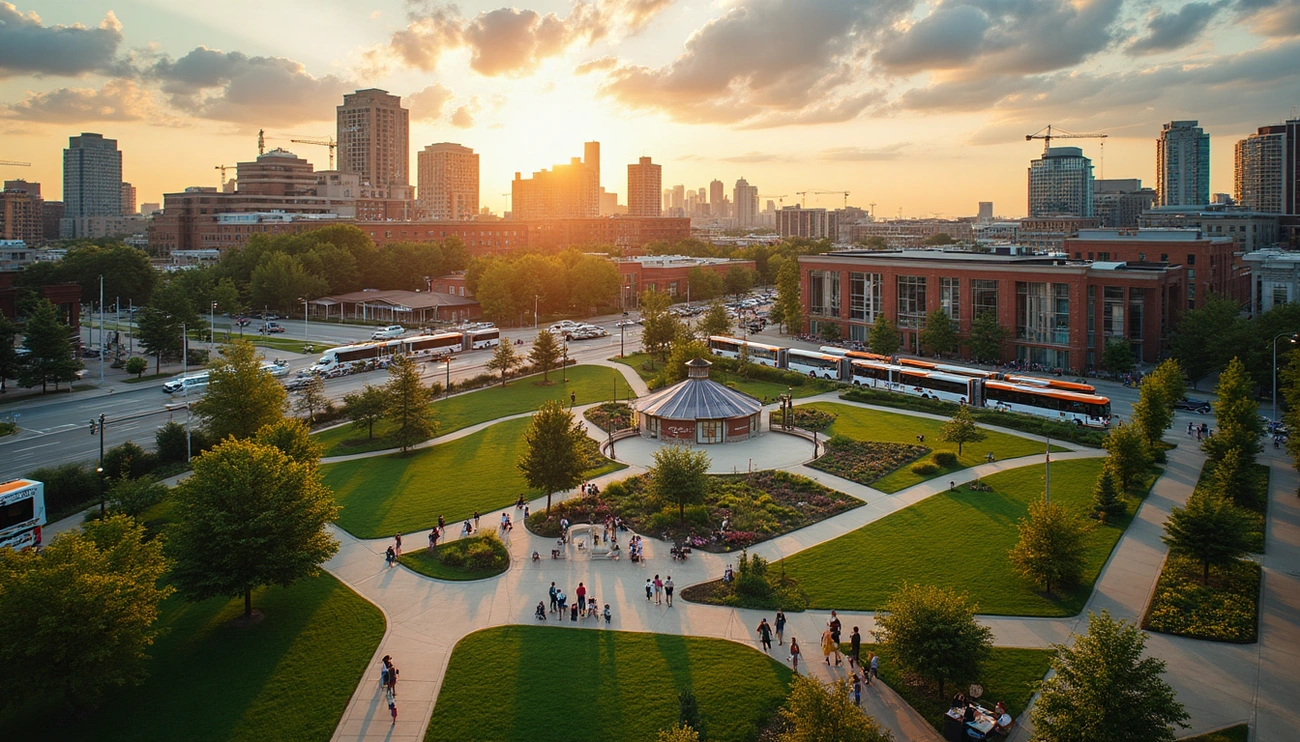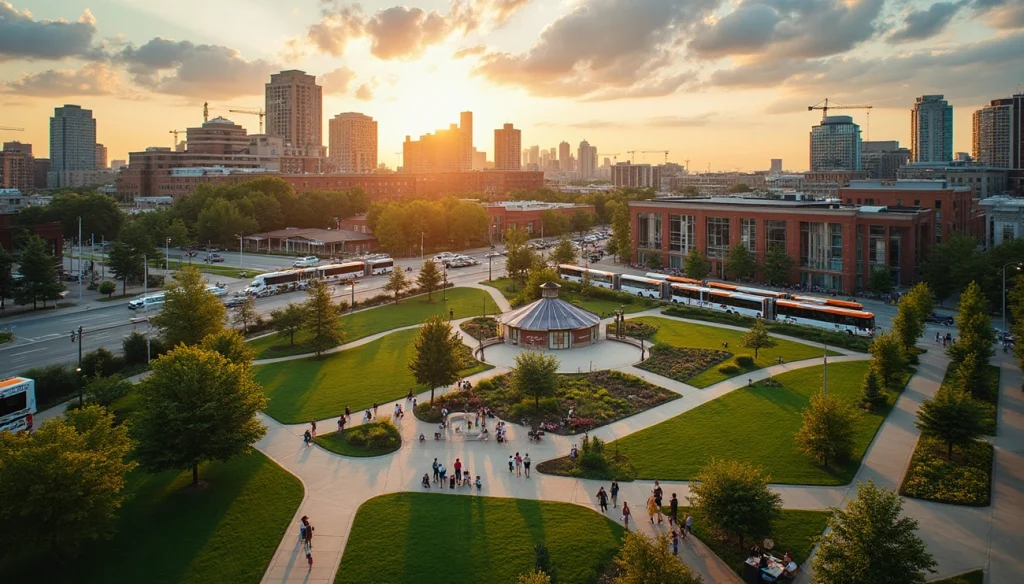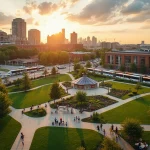Today, living in Brampton Ontario means you are in a very unique Canadian experience as Brampton is currently one of Canada’s fastest growing cities, going from 500 residents in 1853 to over 790,000 in 2024. Brampton was founded over 160 years ago and through that time experienced tremendous growth. Since 2001, Brampton’s population growth rate has been four times that of Ontario’s overall population growth. Quite a dynamic city, Brampton is a true cultural mosaic that befits a city of over 250 ethnic origins and more than 170 languages.
Brampton is the youngest municipality in the greater Toronto area and has a median age of 33.7 years. The diversity is something to behold; according to the 2016 census, over 52 percent of Brampton’s inhabitants were born outside of Canada and it is fifth in immigration for proportion to total population. Brampton was growing quickly, while boasting a cost of living 18.7% lower than Toronto, which is a major appeal for many new residents.
That said, Brampton has its challenges! For example, residents of Brampton have some of the highest car insurance rates in Ontario and pay over a $1,000 more than the provincial average for car insurance, which is also $2,494 a year. When you make your final decision about moving to Brampton, it is essential to weigh out these pros and cons. In this article, I will show an authentic resident’s view of Brampton and share what makes Brampton great: with over 850 parks and other outdoor spaces, there is food from around the globe, details about housing costs, public transportation, community services, and the truth about safety for Brampton in 2025!
What is Brampton known for in 2025?
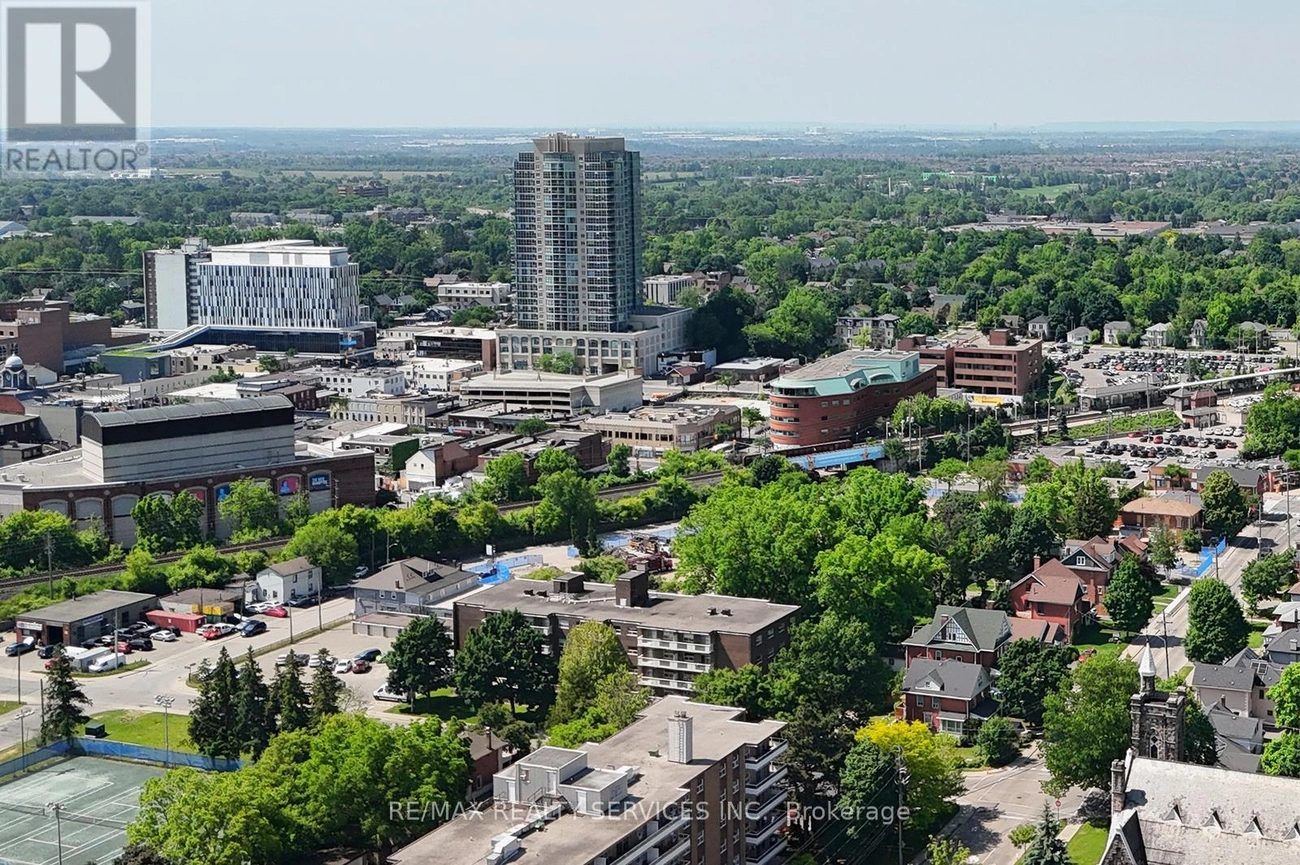
Image Source: Ovlix
Brampton has emerged as one of Ontario’s most dynamic municipalities, recently surpassing Mississauga to become the province’s third-largest city with a population of 791,486 as of 2024 . Originally known as the “Flower Town of Canada” due to its thriving greenhouse industry in the 1860s, today’s Brampton offers a fascinating blend of rich history and cultural diversity that makes living in Brampton Ontario a unique experience.
A brief history and cultural identity
The Brampton area has been home to Indigenous peoples for millennia, with archeological evidence confirming native hunting camps along the Credit and Humber river valleys dating back to 8000 BCE . The modern settlement began taking shape in the early 1800s, with the intersection of Queen and Main Streets—known as the “four corners”—serving as its historical heart .
Named after a town in England in 1834, Brampton was officially incorporated as a village in 1853 when its population reached 500 residents . The arrival of the Grand Trunk Railway in 1856 triggered an economic boom, and by 1873, Brampton became a town with John Haggert as its first mayor .
A defining moment in Brampton’s identity came in 1860 when Edward Dale established a flower nursery that eventually made the city known as the “Flowertown of Canada” . Dale’s Nursery became Brampton’s largest employer, with hundreds of acres of greenhouses growing prize orchids and hybrid roses for export worldwide . Even as the flower industry declined in the mid-20th century, Brampton maintains “Flower City” as its slogan, honoring this heritage .
In 1974, provincial restructuring created the current City of Brampton through the amalgamation of the town with portions of Chinguacousy and Toronto Gore Townships. Additionally, Brampton retained its role as the administrative center of the newly formed Peel Region.
Population growth and diversity
Brampton’s growth has been nothing short of remarkable. With 791,486 residents as of 2024, the city has seen a 17% increase (135,006 people) from the 2021 Census . This impressive growth has positioned Brampton as the 7th largest city in Canada and the 2nd largest in the Greater Toronto Area .
The city’s diversity stands as its most distinctive characteristic. According to census data, 80.6% of Brampton’s population identifies as visible minorities. The South Asian community is the largest (340,815 people), followed by Black (85,305) and Filipino (21,060) populations .
Furthermore, Brampton boasts remarkable linguistic and cultural diversity with:
- 250 different ethnic origins reported in 2021
- 171 different languages spoken
- 52.9% of residents born outside Canada
India remains the most common birthplace for immigrants, with Indian being the most frequent ethnic origin, accounting for 27.7% of the population .
Why people are moving to Brampton
Affordability tops the list of reasons people choose to make Brampton home. Housing costs in Brampton are approximately 45-50% lower than in Toronto . For example, a one-bedroom apartment in downtown Brampton costs about $1,542 monthly, considerably less than similar accommodations in Toronto.
Beyond affordability, Brampton’s cultural diversity attracts newcomers seeking vibrant community connections. The city celebrates this multicultural fabric through events like Carabram, Brampton’s 43-year-old multicultural festival featuring music, dance, food, and performances from around the world.
Location is a major factor for the appeal of Brampton. Being part of the Greater Toronto Area, and only 40 km from Toronto , and close to major employment centres, there is a growing job market in Brampton that include reasonable opportunities in healthcare, technology, and logistics.
Moreover, with an average of 1.9 children per family , the city’s family-friendly environment is a strong lure to young families wanting to create roots in a culturally rich and warm environment.
Cost of living in Brampton Ontario
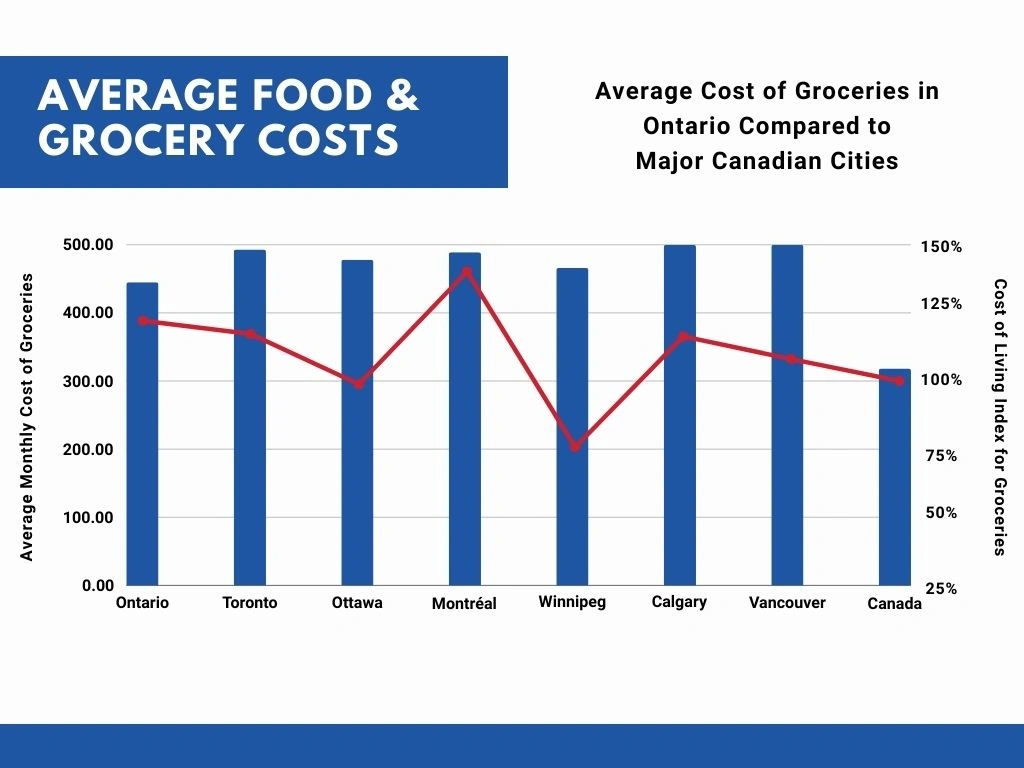
Image Source: Team Goran
As someone who’s lived in the Greater Toronto Area for years, I can tell you that understanding the cost of living in Brampton Ontario involves more than just looking at housing prices. Nevertheless, your monthly budget starts with where you call home.
Housing and rental prices
The real estate sector in Brampton is considered solvent, with average residential prices reaching approximately $1,325,555 in May 2025 . This is a 0.7% increase from April 2025, but represents a decrease of 5.1% from May 2024 .
Renting provides a broad range of outcomes depending on where you are and how big your place is. A one-bedroom apartment in Brampton will cost an average of $2,060 if it is located in the city center, and approximately $1,626 if you are located outside of the central core . If you need a bigger place, a three-bedroom apartment in the center averages around $3,033 and $2,800 if located outside of the core .
The ups and downs of the market vary widely, with some sources reporting catching basement apartments at about $209 for a one-bedroom and $278 for a two-bedroom . Brampton is a possible option at a variety of income levels!
Utilities, groceries, and daily expenses
Beyond housing, day-to-day expenses significantly impact your budget when living in Brampton. Basic utilities (electricity, heating, cooling, water, garbage) for a 915 sq ft apartment average around $235 monthly . Internet service (60 Mbps or more) adds approximately $71 to monthly expenses .
Grocery costs remain reasonable compared to nearby cities. A weekly grocery bill for an average person runs about $618 per month . Common items include:
- Milk (1 gallon): $16.14
- Eggs (dozen): $4.23
- Fresh white bread (1 lb): $2.52
- Chicken filets (1 lb): $5.82
For those who enjoy dining out, a meal at an inexpensive restaurant costs approximately $28.56, while a three-course dinner for two at a mid-range restaurant averages $83.60.
Comparison with Toronto and Mississauga
One of the most impressive pieces of data from Brampton’s cost profile is its comparison to nearby cities. In general, the cost of living in Brampton is about 18% lower than that of Toronto (not including rent). When rent is included, the disparity is 20.6%.
Comparatively, Mississauga is about 9.1% more expensive than Brampton (excluding rent) and 13% higher when including housing costs . This positions Brampton as the most affordable of the three cities.
Rental prices tell a similar story. Toronto rents run 26.1% higher than Brampton , while Mississauga’s are 21.1% higher . A family would need approximately $8,358 in Mississauga to maintain the same standard of living that $7,400 provides in Brampton.
Monthly salaries reflect these differences too. The average after-tax salary in Brampton is $3,745, compared to $4,409 in Toronto and $4,319 in Mississauga . Consequently, while incomes are lower in Brampton, the cost advantages often make up the difference for many households.
Transportation and commuting realities
Getting around is a crucial aspect of living in Brampton Ontario, especially with 77% of residents driving to work daily. As a rapidly growing city, transportation presents both opportunities and challenges.
Public transit options: GO, Züm, Brampton Transit
Brampton offers several public transit options for residents. GO Transit, operated by Metrolinx, connects Brampton to the Greater Golden Horseshoe region . The Brampton GO Station offers weekday and weekend train service with up to 3 trains per hour during peak times . Free customer parking is available at the station’s main lot (1724 spaces) and south lot (646 spaces).
Züm, Brampton’s bus rapid transit service, operates five routes :
- Züm Queen Street (Downtown Terminal to York University)
- Züm Main Street (Sandalwood Parkway to Mississauga City Center Terminal)
- Züm Steeles Avenue (Lisgar GO Station to Humber College)
- Züm Bovaird Drive (Mount Pleasant GO Station to Malton GO Station)
- Züm Queen Street West (Downtown Terminal to Mount Pleasant GO Station)
Brampton Transit provides accessible service with features like ramps, low floors, and voice announcements.
Driving in Brampton: traffic and road conditions
Driving in Brampton requires full attention as the city has 7 of the top 10 busiest intersections in Peel region . Approximately 60% of commuters drive outside their area for work, with over 50,000 people commuting to Toronto . The average daily commute time is 130 minutes .
Weather conditions impact driving with 113 rainy days and 44 snow days annually . Currently, major infrastructure projects like the Mayfield Road expansion aim to ease congestion.
Car insurance costs and why they’re high

Image Source: Insurance Business Mag
Notably, Brampton has Ontario’s highest car insurance premiums. The average annual cost is $3,771.83, a 37% increase from 2021 [15]. This significantly exceeds the provincial average of $2,430.02 .
These high rates stem primarily from Brampton having 25% more auto claims than the provincial average, with claims costing 30% more . Additional factors include long commutes, limited public transit options, and a surge in vehicle thefts (8,322 in 2023, up 37% year-over-year).
Is Brampton a good place to live for families?
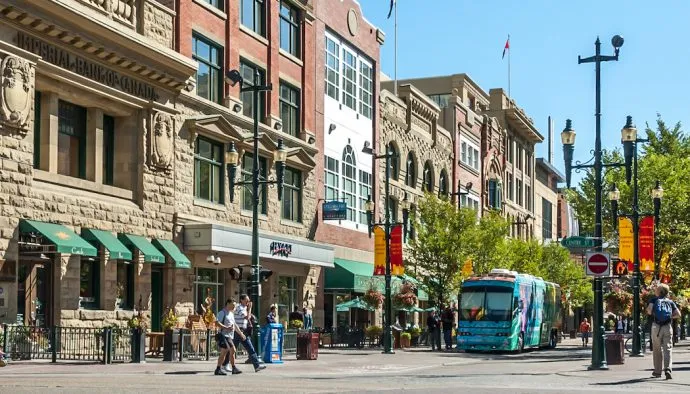
Family considerations are often top of mind when deciding where to make a home. For families thinking about living in Brampton Ontario, the city offers a variety of benefits and challenges.
Education system and school boards
Brampton features two major school boards serving the community. The Peel District School Board (PDSB) educates approximately 153,000 kindergarten to grade 12 students across more than 259 schools. As the largest employer in Peel Region, PDSB employs over 15,000 full-time staff. Meanwhile, the Dufferin-Peel Catholic District School Board provides faith-based education alternatives.
Both boards offer specialized programs – PDSB provides French immersion starting in grade 1, extended French beginning in grade 7, and gifted education for students with advanced intellectual abilities. Moreover, ongoing investment in education infrastructure continues with the provincial government funding the construction of four new schools in Brampton, including spaces for licensed childcare.
Healthcare access and facilities
Healthcare remains a complicated issue for Brampton families. Brampton Civic Hospital, opened in 2007, serves as a full-service community hospital with one of Canada’s busiest emergency departments . It houses one of the province’s largest labor and delivery programs alongside specialized services in critical care, cardiology, and complex surgeries .
Nevertheless, the city’s healthcare infrastructure struggles to keep pace with population growth. In 2020, Brampton declared a healthcare emergency due to overcrowding . “Hallway medicine” – patients receiving care in hallways or closets – continues as a daily reality . A promising development is the planned Toronto Metropolitan University School of Medicine, scheduled to open in Brampton in 2025 .
Lifestyle, food, and things to do in Brampton
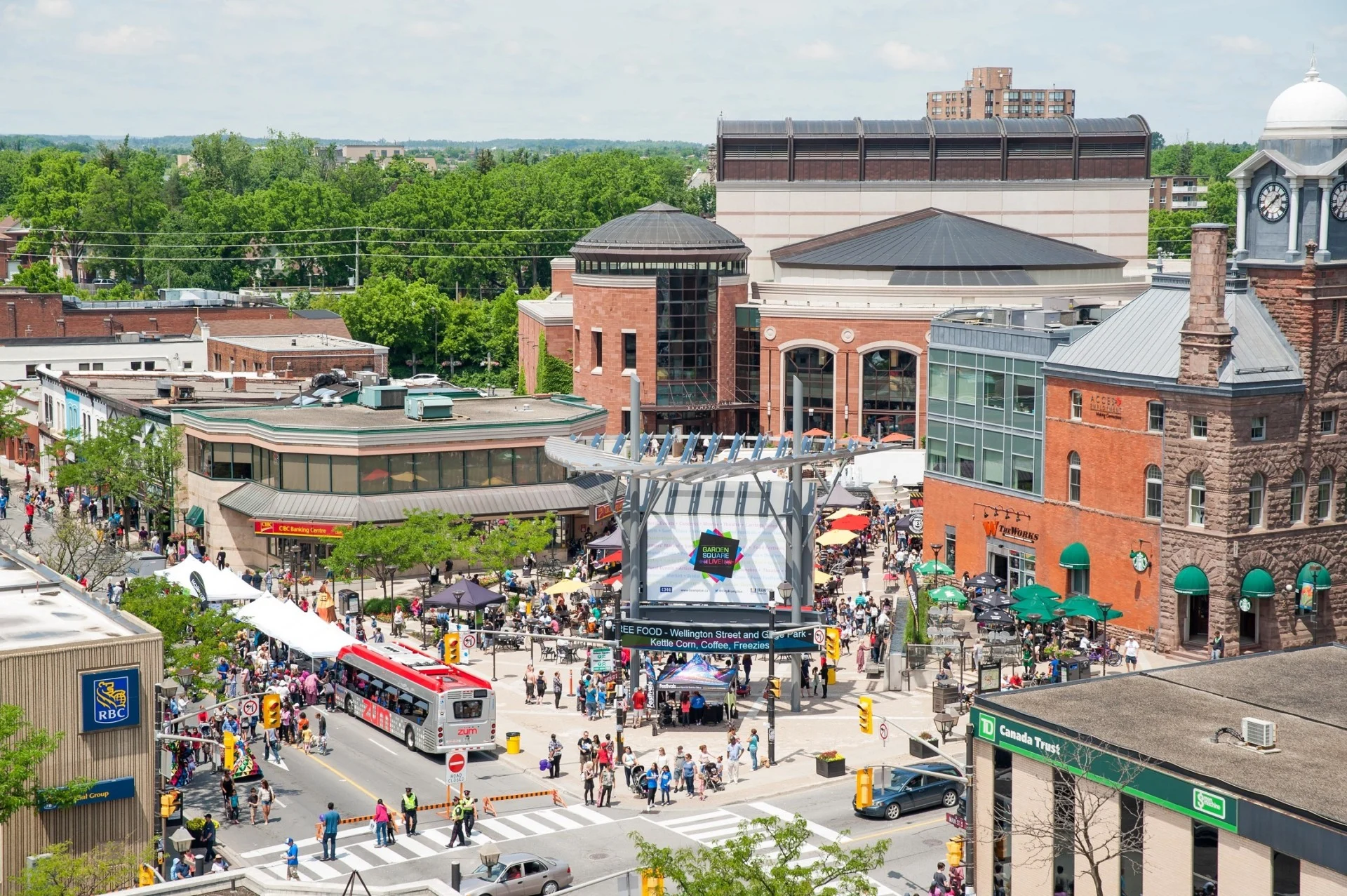
The vibrant lifestyle experienced by those living in Brampton Ontario extends far beyond daily routines, offering rich recreational opportunities across several dimensions of city life.
Parks, trails, and outdoor activities
Brampton boasts an impressive network of over 850 parks and multiple conservation areas , connected by more than 40 kilometers of recreational trails throughout the city. The
Etobicoke Creek Recreational Trail stands out as Brampton’s longest at 17 kilometers, winding through parks, urban forests, and wildflower fields.
Heart Lake Conservation Area serves as a natural oasis with impressive water views and mature forests. This popular destination offers various activities including:
- Zipline adventures across the lake
- Fishing opportunities in designated areas
- Swimming in the pool and splash pad
- Hiking trails for nature enthusiasts
Chinguacousy Park further enriches the outdoor experience with tennis courts, tropical gardens, a carousel, paddle boats, and a petting zoo .
Cultural festivals and community events
The city’s cultural fabric comes alive through yearly celebrations. Carabram, Brampton’s 43-year-old multicultural festival, creates a powerful platform for communicating and celebrating community diversity through captivating performances, authentic cuisine, and immersive cultural experiences.
In essence, the Brampton Fiesta Extravaganza (July 11-13 at Chinguacousy Park) stands as the city’s largest Filipino festival, uniting communities through traditional dance performances, live music, food fairs, and cultural displays.
Dining scene and multicultural cuisine
First and foremost, Brampton’s diverse population has created an extraordinary culinary landscape. The Downtown Brampton Farmers’ Market (Saturdays from 8 AM to 1 PM) serves as the hub of the local food community, offering fresh produce, baked goods, and artisan-made items.
From Northern Chinese dumplings at Green Bites Dumpling & Tea Bar to Caribbean-style food at Vishnu’s Roti Shop (known for spicy Trinidadian doubles), Brampton delivers authentic regional cuisines. Alongside these established favourites, a significant number of young talented chefs draw on their cultural roots to create innovative fusion dishes, making Brampton a hidden gem for food enthusiasts seeking diverse flavours.
Conclusion
My experiences in Brampton provide a unique set of opportunities and challenges that make it different in the Greater Toronto Area. Over my life here, I have witnessed how Brampton balances affordability and accessibility while also recognizing its unique diversity. The diversity of over 250 ethnic backgrounds provides a vibrant community sense of belonging that is nowhere else in Canada.
For family units focused on affordability, Brampton is considerably less expensive than Toronto and Mississauga – it has home housing costs that are approximately 45-50% less than Toronto. However, new residents need to perform due diligence on the relatively high car insurance costs when doing their monthly expenses.
Alright, let’s be real—getting around Brampton is its own adventure. Yeah, there’s Züm buses and GO Transit rolling through, but honestly? Most folks still end up stuck in traffic, clutching their steering wheels and muttering about roadwork. The city’s playing catch-up with all the new people moving in, so construction zones are pretty much a given.
Now, if you’re rolling in with a family or just love hanging outside, Brampton’s parks are actually kind of wild—like, 850 of them. You could probably wander for years and still stumble onto a new patch of grass. Good luck getting bored, anyway. As for schools, there’s both public and Catholic boards, and from what people say, they’re decent. Not Hogwarts, but your kid won’t turn out a goblin.
Brampton’s food scene may give the best insight into the multicultural identity of Brampton. There is everything from authentic South Asian restaurants to Caribbean restaurants and fusion restaurants, culinary adventure is just around the next corner! And there are year-round cultural festivals recognized multiple times a year that exhibit the diversity of the city and allow for cultural exchange.
Brampton has its issues; namely healthcare capacity pressures and also traffic congestion, but overall it is a safe city and crime rates are below average in Canada. With the vibrancy and youthfulness that the city has and the growth trajectory, you get the sense that Brampton is slowly changing and actually enjoying the change.
After considering each aspect of living in Brampton Ontario, there is no doubt a great option for anyone looking for diversity, affordability and comfort in the Greater Toronto Area. The city has some downsides, but without question, Brampton’s spirited community, cultural vibrancy and ongoing growth will make it an interesting to live, if you can make it in 2025.
Key Takeaways
Here are the essential insights about living in Brampton Ontario that every potential resident should know:
• Brampton offers significant cost savings – Housing costs are 45-50% lower than Toronto, with overall living expenses 18% cheaper, making it ideal for budget-conscious families.
• Diversity defines the city’s character – With 250+ ethnic backgrounds and 170+ languages spoken, Brampton creates a vibrant multicultural community unlike anywhere else in Canada.
• Transportation requires planning – While GO Transit and Züm provide public options, 77% of residents drive daily, and car insurance costs average $3,771 annually—Ontario’s highest.
• Family amenities are abundant – Over 850 parks, solid school systems through PDSB, and extensive recreational trails make Brampton particularly attractive for families with children.
• Cultural experiences abound – From authentic multicultural cuisine reflecting global flavors to festivals like Carabram, the city offers rich cultural experiences year-round.
Brampton’s rapid growth to 791,486 residents reflects its appeal as an affordable, diverse alternative to Toronto while maintaining strong community connections and family-friendly amenities. Despite challenges like healthcare capacity and traffic congestion, the city’s youthful energy and cultural richness make it a compelling choice for those seeking value and diversity in the Greater Toronto Area.
FAQs
What is the current real estate market like in Brampton?
As of May 2025, the average home price in Brampton is $1,325,555. This represents a slight increase of 0.7% from the previous month, but a 5.1% decrease compared to the same time last year. The market shows some fluctuations, but overall remains relatively stable.
How does Brampton's growth compare to other Canadian cities?
Brampton is one of Canada's fastest-growing large cities, with a population increase of about 15% since 2020. This rapid growth has led to challenges in areas like healthcare, transit, and infrastructure funding, which city leaders are actively addressing.
What are the pros and cons of living in Brampton?
Brampton offers rich cultural diversity, numerous job opportunities, and a family-friendly atmosphere. However, it also faces challenges such as traffic congestion and rising living costs. The city may be ideal for those seeking cultural experiences and affordability, but less suitable for those preferring an urban lifestyle.
How diverse is Brampton's population?
Brampton is incredibly diverse, with residents from over 250 different ethnic backgrounds speaking more than 170 languages. This diversity is reflected in the city's cultural events, cuisine, and community atmosphere, making it a true multicultural mosaic.
What recreational opportunities are available in Brampton?
Brampton boasts over 850 parks and multiple conservation areas, connected by more than 40 kilometers of recreational trails. The city offers various outdoor activities, including hiking, fishing, and swimming. Additionally, Brampton hosts numerous cultural festivals and events throughout the year, celebrating its diverse community.

